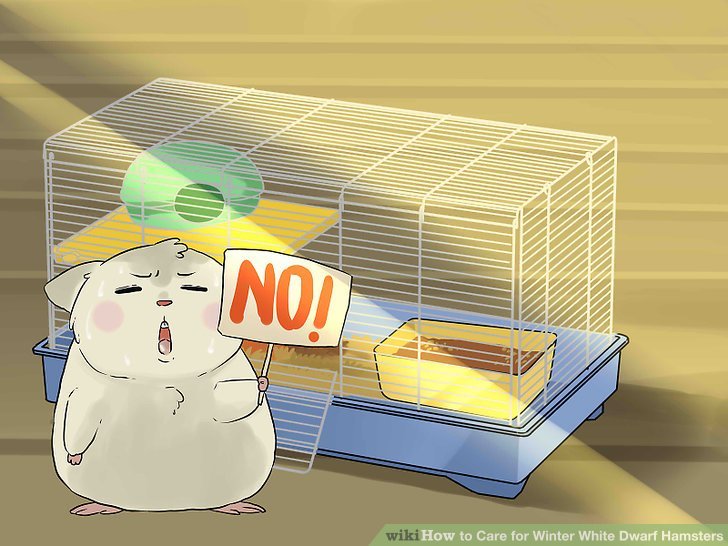
Dwarf winter white hamsters are not just cute; they’re also pretty unique compared to other hamsters. They have fluffy fur that changes with the seasons and a gentle personality that makes them fantastic companions. Just like any other pet, they need proper care, which includes a comfortable cage, a balanced diet, and a bit of handling. In this guide, we’ll dive into everything you need to know to keep your furry friend healthy and happy.
Choosing the Right Cage for Your Dwarf Winter White Hamster
A good cage is the foundation of your hamster’s home. Think of it like their little kingdom where they can play, sleep, and explore. A cage that’s too small can lead to a stressed-out hamster, while a spacious one lets them roam freely. Aim for a cage that’s at least 24 inches long, 12 inches wide, and 12 inches tall. If you can, choose a multi-level setup that encourages climbing and exploration.
Ventilation is another important aspect. Make sure the cage has good airflow to keep the environment fresh. Look for cages made of wire or glass; both options offer excellent ventilation. Avoid cages made primarily of plastic, as they can trap odors and aren’t as resilient. You can also use a layer of bedding that allows for burrowing—hamsters love that!
Finally, consider the type of bedding. Aspen shavings or paper-based bedding are great because they’re absorbent and safe for your hamster. Avoid cedar or pine shavings, as they can be harmful. Remember, your hamster will spend all their time here, so it should feel like a cozy little home!
Creating a Stimulating Environment
Once you’ve chosen the right cage, it’s time to make it an inviting place for your hamster. Add toys, tunnels, and hiding spots to keep your little friend entertained. Hamsters are naturally curious, so providing them with fun activities is essential. You can include a wheel for exercise—something like a silent spinner is great since it won’t disrupt your sleep at night.
Consider adding tunnels or tubes. They encourage exploration and mimic their natural habitat. You can make simple tunnels using toilet paper rolls or purchase plastic ones from pet stores. Hiding places, such as small wooden houses or ceramic pots, are also important. These spots let your hamster feel safe and secure, which is vital for their well-being.
It’s also essential to establish a clean routine. Spot clean the cage daily and do a deep clean every week to prevent odors and keep your hamster healthy. It’s a bit like cleaning your own home; a clean space helps everyone feel better!
Feeding Your Dwarf Winter White Hamster
Diet plays a big role in your hamster’s health. Just like us, hamsters need a balanced diet to thrive. The main component of their food should be a high-quality hamster mix. Look for a mix that contains seeds, grains, and pellets—this ensures they get the right balance of nutrients.
In addition to their main food, you can offer fresh vegetables like carrots, spinach, or broccoli in small amounts. Remember, though, that some foods can be harmful. Avoid giving them citrus fruits or anything high in sugar, as it can upset their stomachs.
Occasionally, you can also offer tiny amounts of protein, like mealworms or cooked chicken (just a little!). However, make sure to research any new food before giving it to your hamster. It’s a bit like introducing a new dish to your dinner table—you want to make sure it’s safe and delicious!
Don’t forget about water! Make sure they always have access to fresh, clean water. A water bottle is usually the best choice since it prevents spills and keeps the cage clean. Just remember to check it regularly to ensure it’s functioning well.
Handling Your Dwarf Winter White Hamster
Handling your dwarf winter white hamster is an essential part of their care. It helps them get used to you and builds trust over time. Start with gentle interactions by letting them sniff your hand while they’re in their cage. This is like a friendly introduction, where they can feel safe and less threatened.
When you’re ready to pick them up, use both hands and scoop them gently. A good technique is to place your palm in front of them and let them walk onto your hand. You might be wondering, how often should you handle them? Aim for a few minutes each day. Gradually increase the time as they become more comfortable with you.
Be mindful of their mood, though. If they’re sleepy or acting restless, it’s best to wait until they’re more active and relaxed. You wouldn’t want to be disturbed during your nap, right? Patience is key, and the more you handle them, the more they’ll bond with you.
Common Health Issues and Their Prevention
Even with the best care, your dwarf winter white hamster can face some health issues. Common problems include wet tail, respiratory infections, and dental issues. Wet tail is particularly serious; it’s a bacterial infection that can cause diarrhea. Keep an eye out for signs of distress—like lethargy or abnormal droppings—and consult a vet immediately if you notice anything off.
To prevent these health problems, focus on maintaining a clean cage and providing a balanced diet. Stress can also play a big role in your hamster’s health, so keeping their environment calm and stable is vital. Avoid loud noises, sudden changes in temperature, or rough handling.
Regular vet check-ups can also help catch any potential issues early. Think of it like taking your car for a tune-up—prevention is always better than a costly fix down the road.
Caring for a dwarf winter white hamster can be a delightful experience. With the right cage, balanced diet, and loving handling, you’ll create a happy and healthy environment for your little friend. Remember, patience is just as essential as knowledge. Just like any relationship, it takes time to build trust and companionship.
So, whether you’re watching them scurry in their cage or gently holding them in your hands, enjoy every moment. After all, these small creatures can fill your home with joy in ways you never expected. With the tips shared here, you’re well on your way to being an amazing hamster parent!

